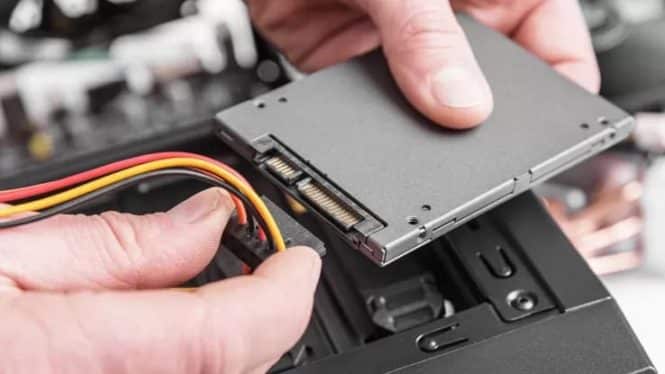Solid State Drives (SSDs) are slowly replacing hard drives as key components for high-end computers. They allow your system to boot faster, all applications work better and the computer itself is more responsive to your commands.
If you have been motivated by these facts and purchased an SSD in a technology store, you should now install it on your computer. For someone who has never handled the hardware before, this may seem like a difficult task.
However, there is nothing to worry about. It is not necessary to pay a technical service to install the unit- you can do it yourself. This article will offer a complete guide on how to install an SSD on its own even if you are not familiar with the process right now.
1) PREPARATIONS AND PRECAUTIONS
Installing an SSD is not an easy task and requires special equipment and means of precaution. Since you’re working on static electricity and hardware, make sure you have everything you need.
Here’s what you need to have:
- Your Solid State Drive (to avoid unnecessary damage, it’s best not to unzip it until the time comes).
- A screwdriver that does not have a magnetic tip
- Your computer manual (optional, but it will make things easier)
Furthermore, if you want to replace the current drive with an SSD, you can use a data cloning software that will make it easier to move files from the previous drive to the one you are installing. Some of the best disk cloning tools available include Clonezilla and AOMEI (free) or EaseUS (free trial).
Keep in mind that static electricity can cause problems for the device. To prevent static damage, it is best to wear an antistatic wrist strap (or electrostatic discharge). This safety gadget prevents the accumulation of electrostatic discharges. Alternatively, you can try touching the unpainted metal surface on the computer case to download it.
Another thing to know is that opening the SSD will void the warranty. So you should never unscrew the protective shell. If you believe that there is physical damage to the unit, you should first report it to the store. Also, if you touch the connectors on the unit, they may not work properly.
2) INSTALLATION OF THE UNIT
The installation of the unit will require some practical skills and technical knowledge. To install an SSD without problems, carefully follow this detailed guide.
STEP 1- OPENING THE HOUSE
First of all, an adequate work environment must be guaranteed. Here’s what you should do:
- Make the environment as static secure as possible. This means leaving the cable connected but the unit is turned off so that it remains on the ground. Also, avoid rubbing yourself on a rug or similar floor and do not wear clothes that cause static electricity (plexiglass, polyester, wool, etc.).
- To further prevent static electricity, touch a metal part of the enclosure before touching the components.
- Press and hold the power button for a few seconds to release any remaining electricity.
- Remove the computer case cover. Usually, you need to unscrew it and simply remove it, but if you have a manual, you need to check it.
STEP 2- INSTALLING THE SSD
Now that you’ve created a risk-free environment, you should place the SSD inside your computer. Follow these steps:
- Find the location of the storage unit inside the computer. When you find the units of the units, you should notice their size. For example, if you have a 2.5 “drive, you need an additional adapter holder to connect the drive to it. In this way, it will remain stable and secure in the open space. However, if you have a 2.5 “slot, no additional tools are needed.
- If you want the SSD to be your main disk, you should put it in place of the existing one. To do this, remove the cables from that unit and pull it out. Place the new SSD and reconnect the cables.
- If you want the new SSD to act as a secondary drive, you will need to connect a SATA cable to a motherboard port. Then use the other end of the cable to connect it to the SSD. Then connect a SATA power cable also to the unit. If the system or unit has different ports, consult the manual to see how to connect the cables.
- Check again if the disk is properly mounted in the socket. If everything looks okay, the SSD should now be part of your configuration.
STEP 3- CLEANING
At the end of the installation, you should report everything as it was and check if everything works. It is better to do the following:
- Replace the housing cover and tighten it securely.
- Plug in the power cord and turn on the computer.
- If you have not cloned the data, you should install the system and everything else manually. If you’ve migrated in advance, enjoy your new SSD.
A FAI-BY-YOU EXPERT
Now that you know how to install an SSD with all the precautions, you’re one step closer to creating your configuration in the future. Pay attention to static electricity, do not damage the hardware and make sure you check all cables correctly, that’s all.
If you installed everything correctly, you should experience a faster system startup, shutdown, and better overall performance. We hope that all efforts have paid off.
Do you take precautionary measures when installing new hardware on your PC? Which SSD seems the easiest to install? Leave a comment below and share your thoughts with the rest of the community.

